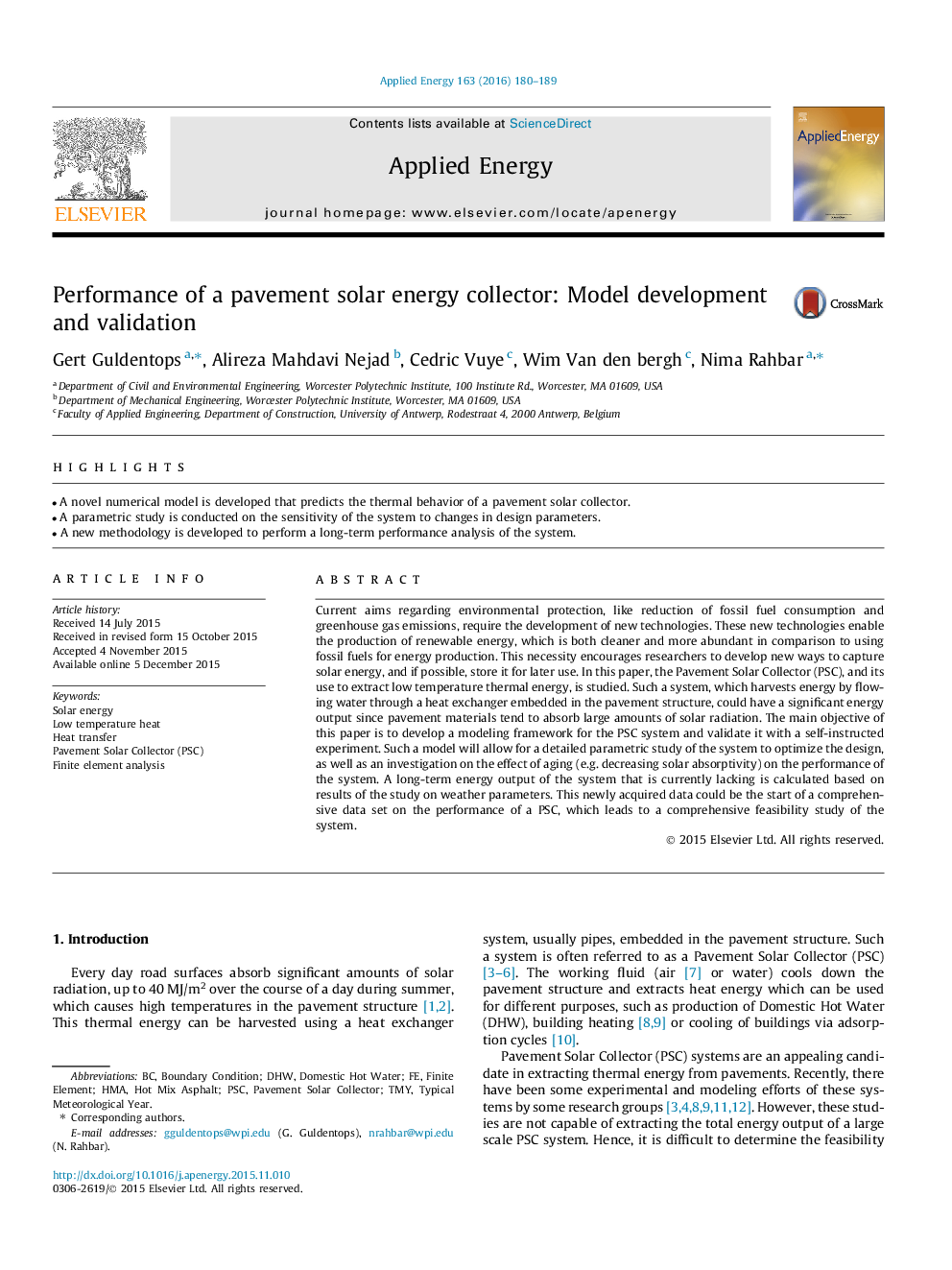| Article ID | Journal | Published Year | Pages | File Type |
|---|---|---|---|---|
| 6684489 | Applied Energy | 2016 | 10 Pages |
Abstract
Current aims regarding environmental protection, like reduction of fossil fuel consumption and greenhouse gas emissions, require the development of new technologies. These new technologies enable the production of renewable energy, which is both cleaner and more abundant in comparison to using fossil fuels for energy production. This necessity encourages researchers to develop new ways to capture solar energy, and if possible, store it for later use. In this paper, the Pavement Solar Collector (PSC), and its use to extract low temperature thermal energy, is studied. Such a system, which harvests energy by flowing water through a heat exchanger embedded in the pavement structure, could have a significant energy output since pavement materials tend to absorb large amounts of solar radiation. The main objective of this paper is to develop a modeling framework for the PSC system and validate it with a self-instructed experiment. Such a model will allow for a detailed parametric study of the system to optimize the design, as well as an investigation on the effect of aging (e.g. decreasing solar absorptivity) on the performance of the system. A long-term energy output of the system that is currently lacking is calculated based on results of the study on weather parameters. This newly acquired data could be the start of a comprehensive data set on the performance of a PSC, which leads to a comprehensive feasibility study of the system.
Keywords
Related Topics
Physical Sciences and Engineering
Energy
Energy Engineering and Power Technology
Authors
Gert Guldentops, Alireza Mahdavi Nejad, Cedric Vuye, Wim Van den bergh, Nima Rahbar,
